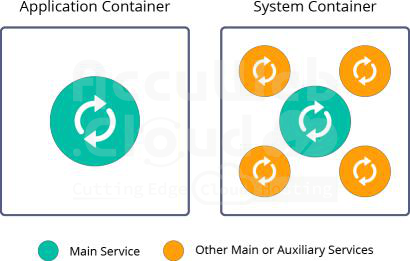What are Application Containers?
The application containers offered by Accuweb.Cloud present a novel approach to containerization. They usually only execute one task and are intended for applications, services, and even microservices. This emphasis on single-process containers encourages the development of transient and immutable infrastructure. Put simply, this indicates that the building pieces of your infrastructure are pre-configured and immutable. Updates are applied by building brand-new containers and adding the required customizations, guaranteeing accuracy and reducing mistakes. These containers also offer outstanding deployment agility because they are simple to spin up and discard when no longer needed.
Back when application containers were just starting out, they came with a heap of problems. They were hard to handle, and they didn’t always play nice with other tech, like Java and database runtimes. This made it a real headache for developers to adopt them. They had to spend a bunch of extra time making sure their apps could run smoothly inside these containers.
Moreover, since application containers are stateless, they can’t store state information internally. So, tasks involving the state are outsourced to external persistent storage systems. But here’s the kicker: some developers argue that relying on state for deployment is outdated. They believe that the cleanest way to go about it is to carry out operations that don’t depend on retaining the state.
Nowadays, a variety of helpful tools have been implemented to make using services with application containers a breeze. As a result, developers can enjoy the benefits of these highly specialized units without getting bogged down in complex management tasks.
Right now, there are a few different types of application container implementations being worked on: Docker, CRI-O, containers, and a few others. Currently, our platform mainly uses Docker because it’s the most popular technology for application containers. Plus, we’ve got a bunch of handy features like deployment automation, quick server setup, and tools for storing and processing data (like sessions, logs, and configs). These make using application containers super easy and convenient.
But there’s a catch: Some apps and technologies might still hit roadblocks when trying to switch to application containers. This could be because of issues like not enough isolation, being stateless, or needing to run just one process. This is especially tricky with complex tools like Kubernetes, which orchestrate containers. If migration is proving tricky, system containers could be a better option for containerizing.






